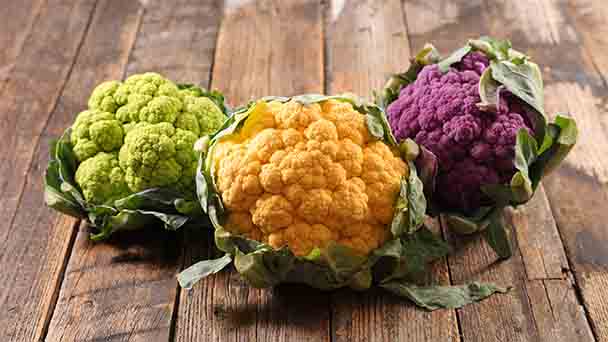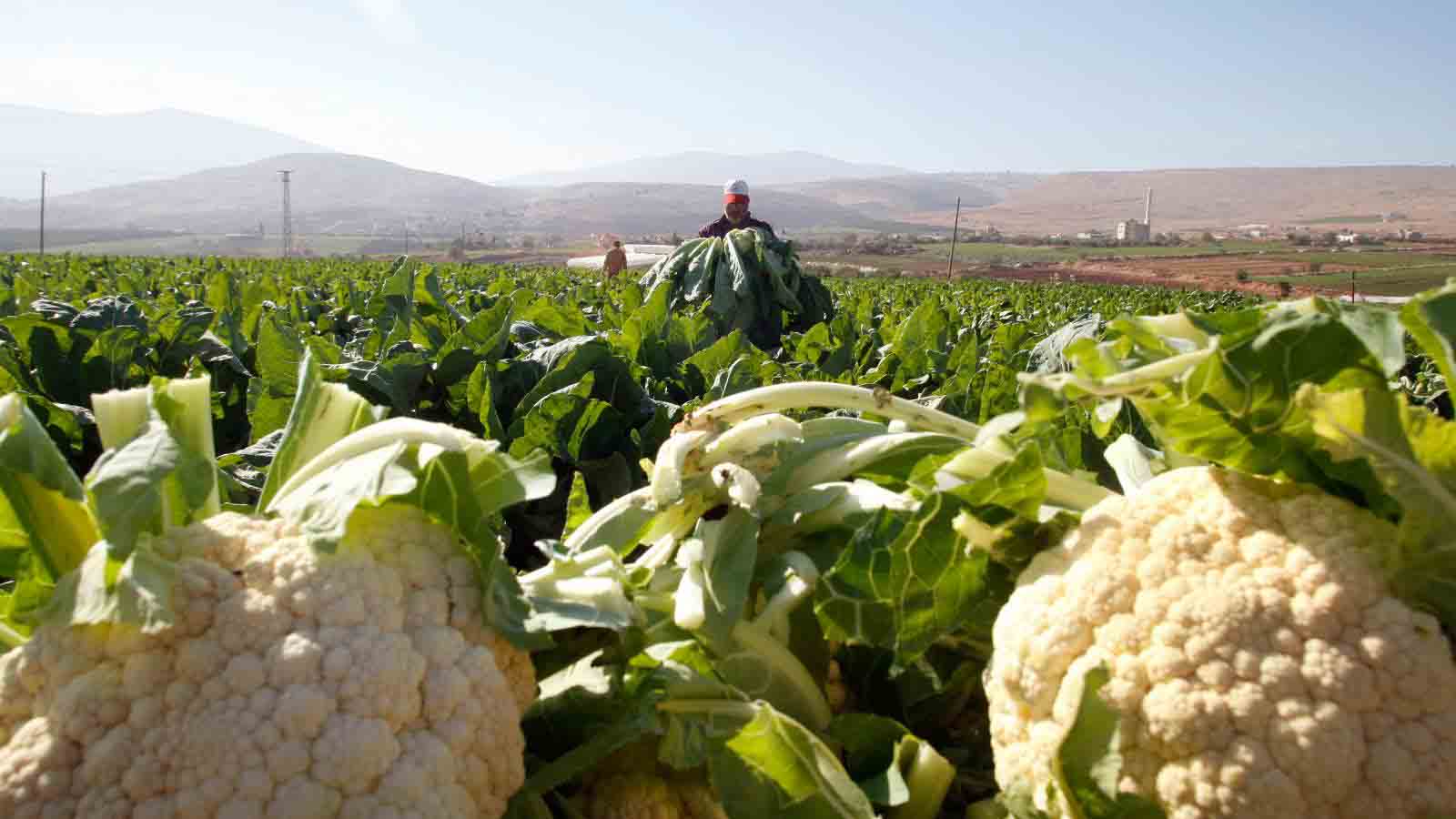Cauliflower Profile
Written by Joy
Nov 08 2021

Cauliflower is an annual plant in the Brassica genus of the cruciferous family, also known as cauliflower, broccoli, cabbage, broccoli, and broccoli. Cauliflower is native to the eastern coast of the Mediterranean and was introduced to China in the early 19th century. Cauliflower is a very popular vegetable with delicious taste, high nutrition, and high medicinal value. Cauliflower is very rich in vitamin C and has anti-cancer effects. The average nutritional value and disease prevention effects of cauliflower far exceed those of other vegetables.
Cauliflower morphological characteristicsCauliflower growth habit and growing environment and distributionCauliflower efficacy and roleEdible value of cauliflowerCauliflower cultivation1. The nutrient block seedling method of cauliflower2. The nutrient bag nursery method of cauliflower
Cauliflower morphological characteristics
Cauliflower is a biennial herb, 60-90 cm high, and is frosted. The stems of cauliflower are erect, strong, and branched. The basal leaves and lower leaves of cauliflower are oblong to elliptical, 2-3.5 cm long, gray-green, rounded at the top, spread out, not convoluted, whole or with thin teeth, sometimes the leaves are extended, with several small Lobes, and winged. Its petiole is 2-3 cm long; the middle and upper leaves of the stem are small and sessile, oblong to lanceolate, holding the stem. At the top of the stem, there is a milky white fleshy head that is densely integrated with total pedicel, pedicel and undeveloped flower buds. The racemes of cauliflower are terminal and axillary. Its flowers are pale yellow and later become white. The silique is cylindrical, 3-4 cm long, with a midrib, the lower part of the bill is thick and the upper part is thin, and the length is 10-12 mm. The seeds are broadly oval, nearly 2 mm long and brown. The flowering period of cauliflower is generally in April, and the fruiting period is in May.Cauliflower growth habit and growing environment and distribution

Cauliflower is native to the Mediterranean coast and was introduced to China in the 19th century. In the early days, it was only planted in Shanghai, Tianjin and other places for the needs of western restaurants. Cauliflower is considered to be a very nutritious vegetable. Later, due to the successful cultivation, it was gradually spread to various places and became a common edible vegetable, so it was widely distributed throughout China.

Cauliflower efficacy and role
Edible value of cauliflower
Cauliflower has anti-cancer and anti-cancer effects. According to the American Cancer Society, among many fruits and vegetables, broccoli and Chinese cabbage have the best anti-cancer effects. Cauliflower contains isothiocyanate compounds and trace elements, which have antioxidant effects. Long-term consumption of cauliflower can reduce the incidence of rectal cancer, breast cancer and gastric cancer. Contains flavonoid compounds, has the effect of protecting the cardiovascular system. Flavonoids can prevent infections and are the best blood vessel clearing agents. They can prevent cholesterol oxidation, prevent platelets from clumping, and can reduce thrombosis, thereby reducing the risk of heart disease and stroke. The mortality rate of coronary heart disease is low. Cauliflower is one of the vegetables with the most flavonoids.
Cauliflower is rich in Vc, and every 100 grams of cauliflower contains 85-100 mg of Vc, which is 4 times higher than that of Chinese cabbage. Has the effect of detoxifying the liver. Eating more cauliflower will also thicken the blood vessel walls, making it difficult to break. Vc can enhance the liver's detoxification ability, improve the body's immunity, and prevent the occurrence of colds and scurvy. Cauliflower is rich in selenium and Vc, as well as rich in carotene, which has a certain inhibitory effect on preventing precancerous cell pathology.
Cauliflower is rich in biologically active substances. There are also a variety of indole derivative active substances in cauliflower, which can reduce the level of estrogen and reduce the incidence of breast cancer. Cauliflower also contains carotenoids, which can increase the activity of carcinogen detoxification enzymes and prevent the occurrence of cancer; in addition, broccoli also contains dithiophenol thioketone, which can whiten the skin and reduce the enzyme that forms melanin. And to prevent the formation of skin pigment spots, regular consumption can also smooth and appetite. Cauliflower has high water content. Its water content is more than 90% and its calories are low, so for people who want to lose weight, broccoli can fill their stomachs without being obese.
Cauliflower cultivation

1. The nutrient block seedling method of cauliflower
Apply 150kg of decomposed and sieved farmyard fertilizer and 0.5kg of 45% NPK compound fertilizer to every 10m2 seedbed, then plow the ground and smash the soil to make a flat border with a width of 1.3m and a length of 7-8m, leaving 30~ between the borders 35cm wide drainage ditch, flatten the border surface and pour enough water in combination with the soil treatment agent to make the soil moisture saturated. Use a six-tooth harrow to dig the topsoil layer back and forth, and then use a mallet to smooth the border surface and cover the membrane with stuffiness 2 Standby after a week. When sowing, draw a square on the seedbed according to a square of 8-10cm, pierce your eyes with your fingers in the center of the square, and the depth should not exceed 0.5cm so that the seeds will be seeded one by one. , And cover a layer of grass thatch on the seedbed to moisturize, and then water it once. In case of dry weather, increase the watering frequency appropriately. 2 to 3 days after sowing, when most of the young shoots are arched into the soil, the grass thatch cover should be removed in time. In order to prevent the adverse effects of heavy rain and hot sun exposure, a shade shed should be built in time on the broccoli seedling bed, and the top layer should be covered with shading nets, and the height is about 1m away from the seedling bed so that the seedlings can be irradiated with oblique light in the morning and evening to avoid the production of cauliflower. The plastic film is added under the sunshade net to make a small arch to prevent rainstorms.
2. The nutrient bag nursery method of cauliflower
The nutrient bag size is 6.5cm×6.5cm film bag, the nutrient soil formula ratio is 5:1, that is, 500kg soil is mixed with decomposed farm manure 100kg and calcium-magnesium phosphate fertilizer 2.0-2.5kg, and combined with soil treatment chemicals, mix the medicine soil and fertilizer After 2 weeks of even stuffiness, put it in a bag and use it. Note that the moisture content of the nutrient soil in the bag should reach about 80%, that is, it is good for the cauliflower to sprout and emerge. Then arrange the nutrition bags neatly on the seedbed for sowing, and cover the nutrition bags with grass thatch for moisturizing. Within two days after sowing, use a fine watering can for watering to maintain humidity. After the emergence of cauliflower, manage the same nutrient block to raise seedlings.Read Next:
15 Fall Vegetables to Plant for Your Autumn Garden
Latest Updated
- Benefits of Bugleweed - 7 Science-backed Health Benefits
- Bugleweed Dangers & Side Effects - Is It Poisonous?
- How to Plant Evergreen Trees - What You Should Know
- When to Plant Evergreens - Grow Guide for Evergreen Trees
- 12 Wonderful Evergreen Shrubs for Your Garden
- 12 Popular Evergreen Plants with Pictures for Beginners
- When And How To Prune A Lilac Bush Like a Pro
- How to Grow & Care for Lilac Vine (Hardenbergia Violacea)
- Japanese Lilac Tree (Syringa Reticulata) Care & Propagation Guide
- Shumard Oak Pros and Cons - What to Know
Popular Articles
- Winter maintenance of Antirrhinum Majus
- How to Grow Terminalia Mantaly Tree
- How to Grow and Care for Crossostephium Chinense
- How to grow Antirrhinum Majus in spring
- Peristeria Elata (Dove Orchid) Profile: Info & Care Guide
- Underwatered Snake Plant (Sansevieria Trifasciata) - Signs And How To Fix
- How to Care for Brazilian Jasmine Plant (Mandevilla Sanderi)
- How to Grow & Care for Graptopetalum Purple Delight in Summer
- Rosa Chinensis (China Rose): Plant Growing & Care Tips
- How to Care for Baby Sun Rose (Aptenia Cordifolia)